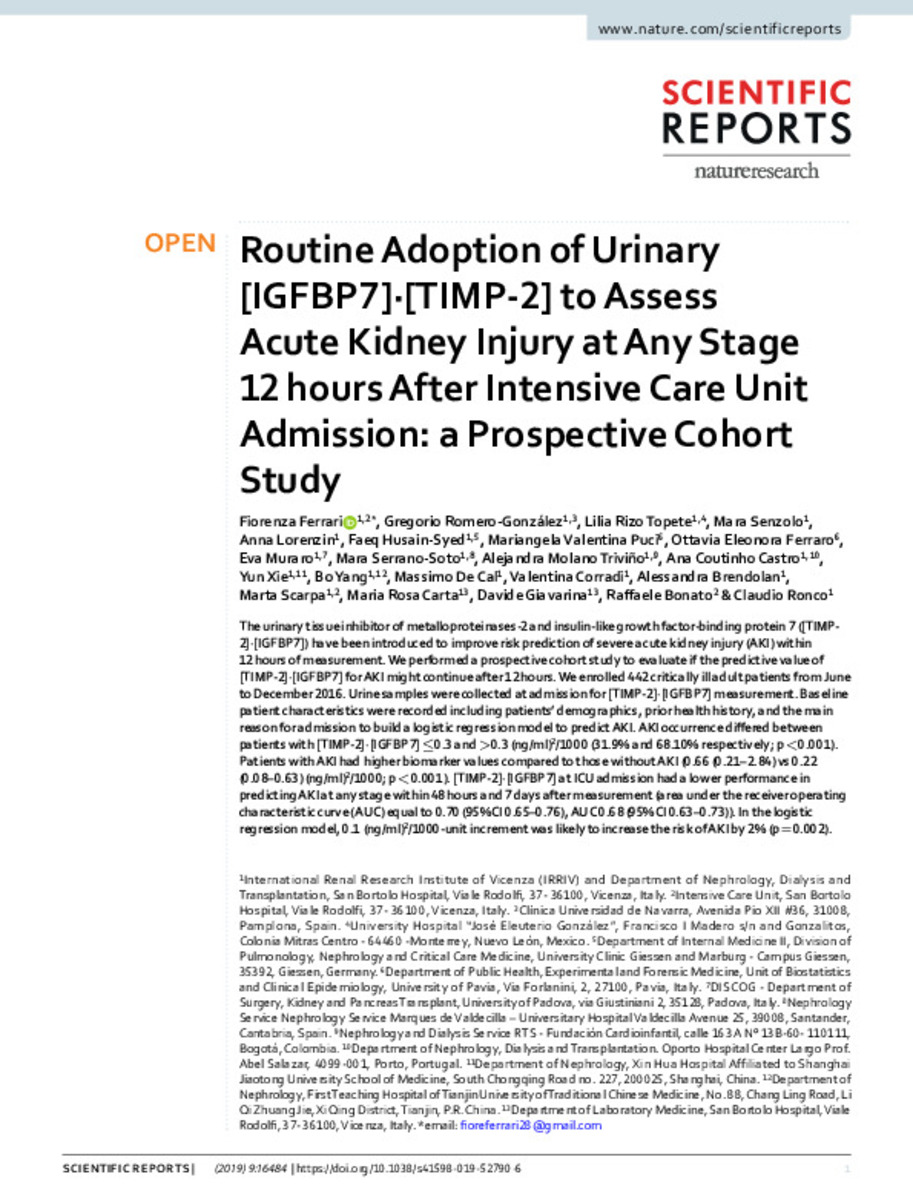Routine Adoption of Urinary [IGFBP7]∙[TIMP-2] to Assess Acute Kidney Injury at Any Stage 12 hours After Intensive Care Unit Admission: a Prospective Cohort Study
Keywords:
Materias Investigacion::Ciencias de la Salud::Urología y nefrología
Publisher:
Springer Science and Business Media LLC
Note:
This article is licensed under a Creative Commons Attribution 4.0 International License, which permits use, sharing, adaptation, distribution and reproduction in any medium or format, as long as you give appropriate credit to the original author(s) and the source, provide a link to the Creative Commons license, and indicate if changes were made
Citation:
Ferrari, F. (Fiorenza); Romero-González, G. (Gregorio); Rizo-Topete, L. (Lilia); et al. "Routine Adoption of Urinary [IGFBP7]∙[TIMP-2] to Assess Acute Kidney Injury at Any Stage 12 hours After Intensive Care Unit Admission: a Prospective Cohort Study". Scientific Reports. 9 (16484), 2019, 1 - 9
Statistics and impact
0 citas en

Items in Dadun are protected by copyright, with all rights reserved, unless otherwise indicated.







